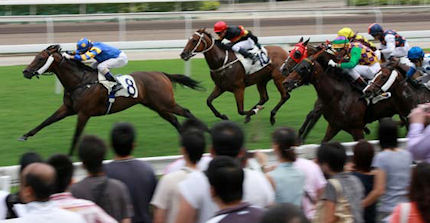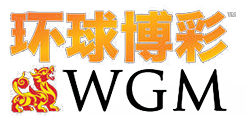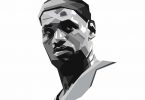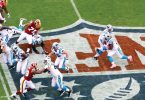This article first appeared in the Sep/Oct 2011 issue of World Gaming magazine.
Thoroughbred horse racing is big business. The UK, US, Middle East, Asia and Australia are big players in this industry where the money involved is astronomical. The ‘Sport of Kings’ revolves around champion horses, the super rich and many millions of gamblers internationally that share a devout passion for this sport. World Gaming takes a look at the history of this remarkable industry, the different international homes and their most important races.
There is no point trying to work out when men started to race and gamble on horses. Wherever there were horses it’s a safe bet that fortunes were being lost and made. We know that Asians were racing horses over 4,500 years ago and that chariot racing was an obsession for nearly all-ancient civilizations from the Egyptians to the Greeks and Romans.
Today horse racing is all about thoroughbred racing. Flat racing on turf is the most dominant form across the world. Steeplechase and hurdle racing is still very popular in the UK and Ireland and trotting races (which originated from chariot racing) still take place in the US, Australia, France and Sweden.
In most countries racing is governed by long standing establishments. The oldest and most recognised of these was created in the 1750s when English racing’s elite met at Newmarket, England to form the Jockey Club. This club still exists today and enjoys complete control over English racing. Similar clubs that control and govern horse racing can be found all over the world, most based on the same model.
The term thoroughbred is interesting in that these horses are one of the most inbred species in the world. The original breed was first brought back to England by knights that acquired Arabian stallions on their crusades. The Jockey Club took steps to regulate the breeding of thoroughbred horses in the late 18th century and hired James Weatherby to trace the pedigree of thoroughbred horses. In 1791 he published the Introduction to the General Stud Book and this book has been updated meticulously eversince. Every thoroughbred can be tracked back to one of only three stallions: Byerley Turk (foaled 1679), Darley Arabian (foaled 1700) and Godolphin Arabian (foaled 1724).
Let’s have a look at the major racing centres of the world and their big race days.
United Kingdom
Speak to anyone in the UK and they will argue that they have the best racing in the world. This is open to discussion but one claim that can’t be disputed is they have been at it the longest in its current form. The public love horse racing and this keeps the industry strong but they have had their problems. Reluctance to move with the times, low prize money and a lack of quality horses in lower grade races are holding back the industry.
| Grand National | 12 to 14 April 2012 |
| Race type: | Steeplechase |
| Country: | England |
| Racecourse: | Aintree Racecourse Liverpool |
| Feature race prize money: | £950,000 (2011) |
|
|
| King George VI and Queen Elizabeth Stakes | (scheduled for late July in 2012) |
| Race type: | Flat/Thoroughbred |
| Country: | England |
| Racecourse: | Ascot Racecourse, Ascot |
| Feature race prize money: | £1 million |
|
|
| Epsom Derby | 2 June 2012 |
| Race type: | Flat/Thoroughbred |
| Country: | England |
| Racecourse: | Epsom Downs, Epsom |
| Feature race prize money: | £1.25 million |
|
|
Europe and Ireland
European racing on the continent is fairly weak outside France and to a lesser extent Germany and it doesn’t enjoy the level of popular support seen elsewhere. By comparison horse racing in Ireland is a huge industry and we see a high percentage of Irish breed horses racing in the UK. Irish racing is very similar to racing in the UK but we know better than to list the Irish in the same category as the British.

| Irish Derby | 30 June 2012 |
| Race type: | Flat/Thoroughbred |
| Country: | Ireland |
| Racecourse: | Curragh Racecourse Co. Kildare, Ireland |
| Feature race prize money: | €1.25 million |
|
|
| Prix de l’Arc de Triomphe | 2 Oct 2011 |
| Race type: | Flat/Thoroughbred |
| Country: | France |
| Racecourse: | Longchamp Racecourse, Paris |
| Meeting prize money: | €6.7 million |
| Feature race prize money: | €4 million (2010) |
|
|
Asia
Asian racing is very strong and becoming stronger. The big players in the region at the moment are Japan, Hong Kong, Singapore, Malaysia and Macau. Racing in this part of the world tends to be run very well and venues such as Sha Tin in Hong Kong are the envy of the West. Gambling availability in many parts of Asia may have slowed down the growth of this sport but this is likely to change in the future.
| Japan Cup | 27 November 2011 |
| Race type: | Flat/Thoroughbred |
| Country: | Japan |
| Racecourse: | Tokyo Racecourse, Fuchu, Tokyo |
| Feature race prize money: | ¥521 million (about US$6.8 million) |
|
|
| Hong Kong Cup | 11 December 2011 |
| Race type: | Flat/Thoroughbred |
| Country: | Hong Kong, China |
| Racecourse: | Sha Tin Racecourse |
| Meeting prize money: | HK$64 million (four international races) |
| Feature race prize money: | HK$20 million |
|
|
| Singapore Airlines International Cup | 20 May 2012 |
| Race type: | Flat/Thoroughbred |
| Country: | Singapore |
| Racecourse: | Kranji Racecourse |
| Feature race prize money: | SG$3 million |
|
|
| Macau Triple Crown | February to May |
| Macau Guineas 1500m 4-year-olds Group 2 HK$800,000 (February) | |
| Macau Derby 1800m 4-year-olds Group 1 HK$2.6 million (April) | |
| Macau Gold Cup 1800m 4-year-olds Group 1 HK$1.2 million (May) | |
| Country: | Macau |
| Racecourse: | Taipa Racecourse |
| Meeting prize money: | HK$4.6 million |
|
|
Middle East
Racing and the way the racing industry operates in the Middle East are very different to the rest of the world. The industry has no reliance or even interest in gambling, which makes it an anomaly. Prize money for international guests is mouthwatering but it is nothing compared to the challenge felt by locals to breed winners of big races. For Arab stables like Godolphin, it is a passion more than a business. Racing syndicates like Godolphin have been breeding, racing and challenging the world’s best for decades and the money that they have poured into the racing scene has played a large role in the industry boom. They send their best all around the world to compete in all the major blue ribbon events.

| Dubai World Cup | 26 March 2012 |
| Race type: | Flat/Thoroughbred |
| Country: | Dubai (one of the seven United Arab Emirates) |
| Racecourse: | Meydan Grandstand and Racecourse |
| Meeting prize money: | US$26.25 million |
| Feature race prize money: | US$10 million |
|
|
US
The US has often been criticised for having blinkers on when it comes to evaluating anything outside their own country. Horse racing follows that trend and Americans consider the only horse races worth watching are those held in their own country. They have a rich history of racing and they have produced some of the world’s best horses. Most of their racing is on dirt not grass which is a major point of difference to the rest of the world.
| Breeder’s Cup World Championships | 4 and 5 November 2011 |
| Race type: | Flat/Thoroughbred |
| Country: | US |
| Racecourse: | Churchill Downs in Louisville, Kentucky (home of the Kentucky Derby) |
| Meeting prize money: | US$26 million |
| Feature race prize money: | US$5 million (Breeder’s Cup Classic) |
|
|
| Kentucky Derby | 5 May 2012 |
| Race type: | Flat/Thoroughbred |
| Country: | US |
| Racecourse: | Churchill Downs in Louisville, Kentucky |
| Feature race prize money: | US$1.4 million for 2011 winner |
|
|
Australasia
Australasian horse racing offers some of the best racing in the world. The public loves it, the prize money is lucrative and the governing bodies controlling the sport tend to manage it reasonably well. Gambling on racing in Australasia is also big business. The only down side is that in recent years they have increased the amount of racing to a point that the lower end of racing is suffering from a distinct lack of class.
| Melbourne Cup | 1 November 2011 (always first Tuesday in November) |
| Race type: | Flat/Thoroughbred |
| Country: | Australia |
| Racecourse: | Flemington, Melbourne |
| Feature race prize money: | AU$6 million |
|
|
| Cox Plate | 22 October 2011 |
| Race type: | Flat/Thoroughbred |
| Country: | Australia |
| Racecourse: | Moonee Valley, Melbourne |
| Feature race prize money: | AU$3 million |
|
|
| New Zealand Derby | 3 March 2012 |
| Race type: | Flat/Thoroughbred |
| Country: | New Zealand |
| Racecourse: | Auckland Racing Club |
| Feature race prize money: | NZ$2.2 million |
|
|







